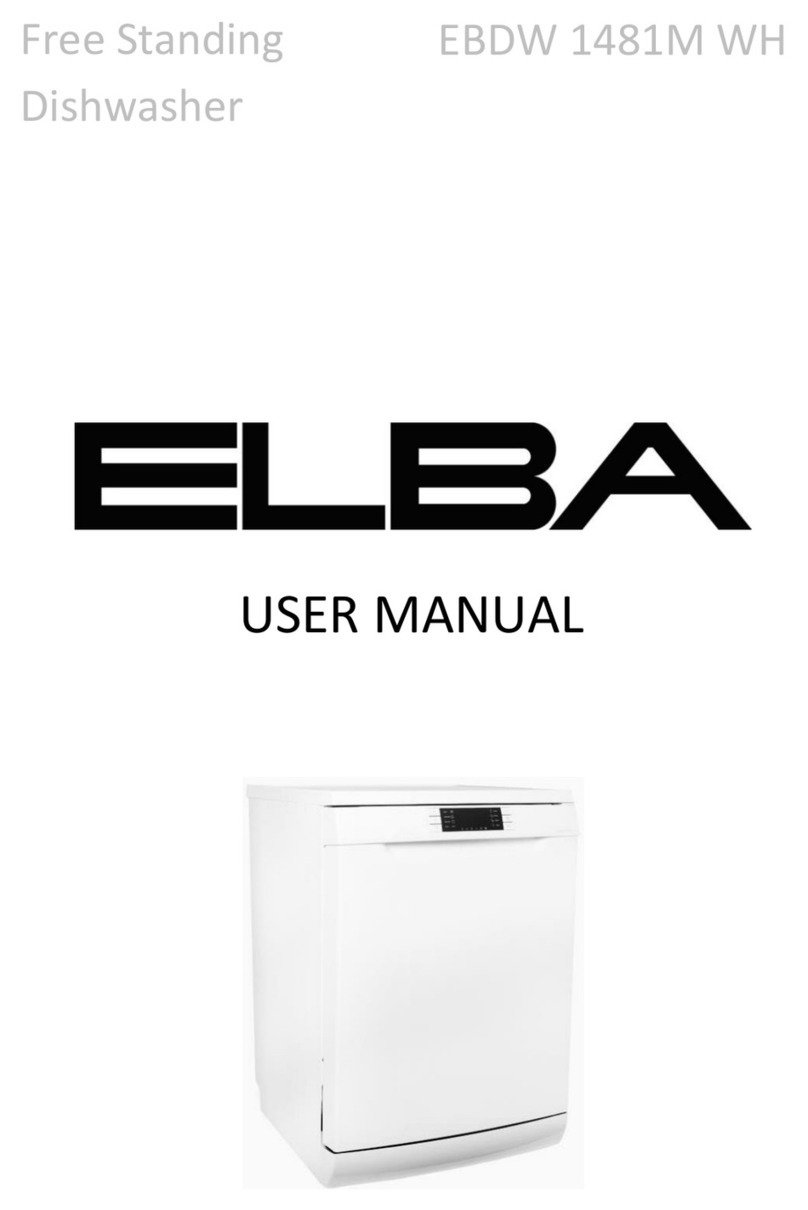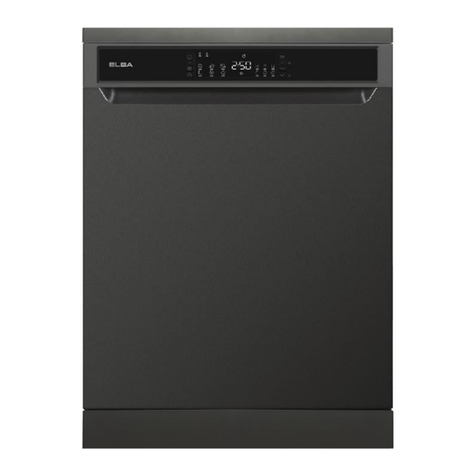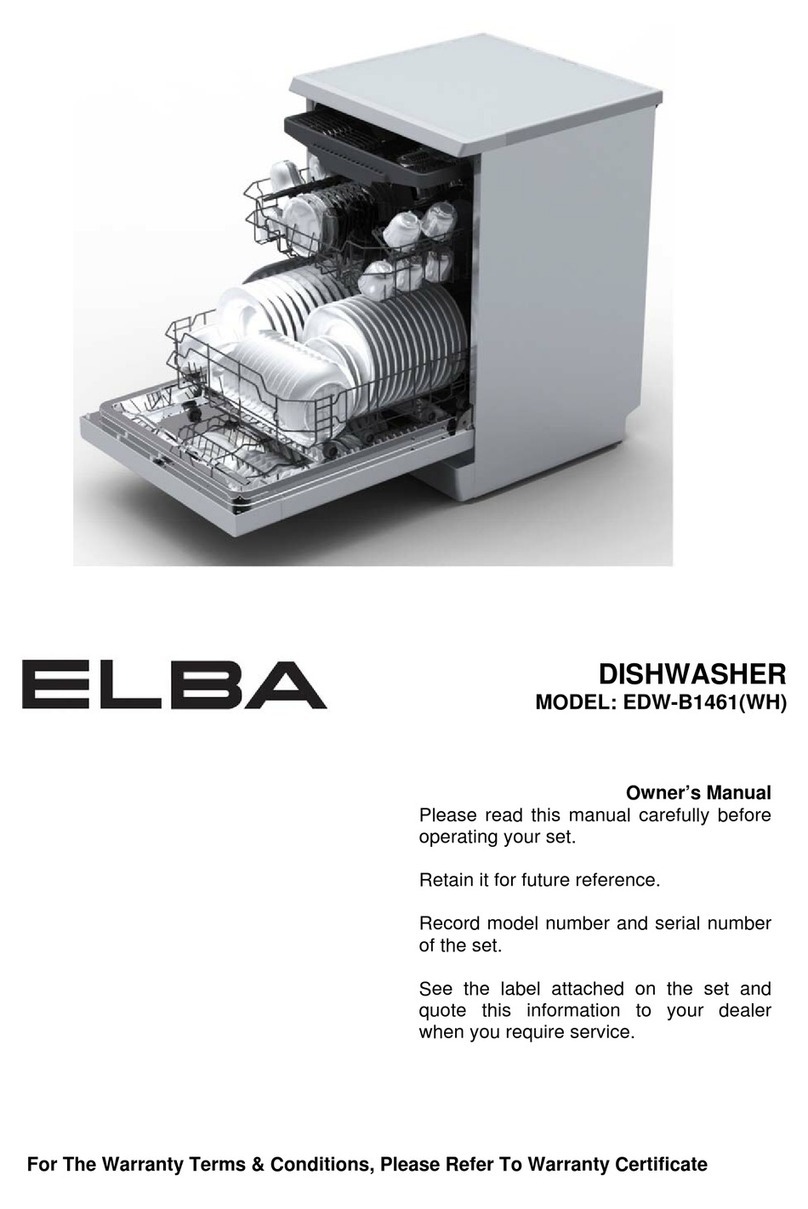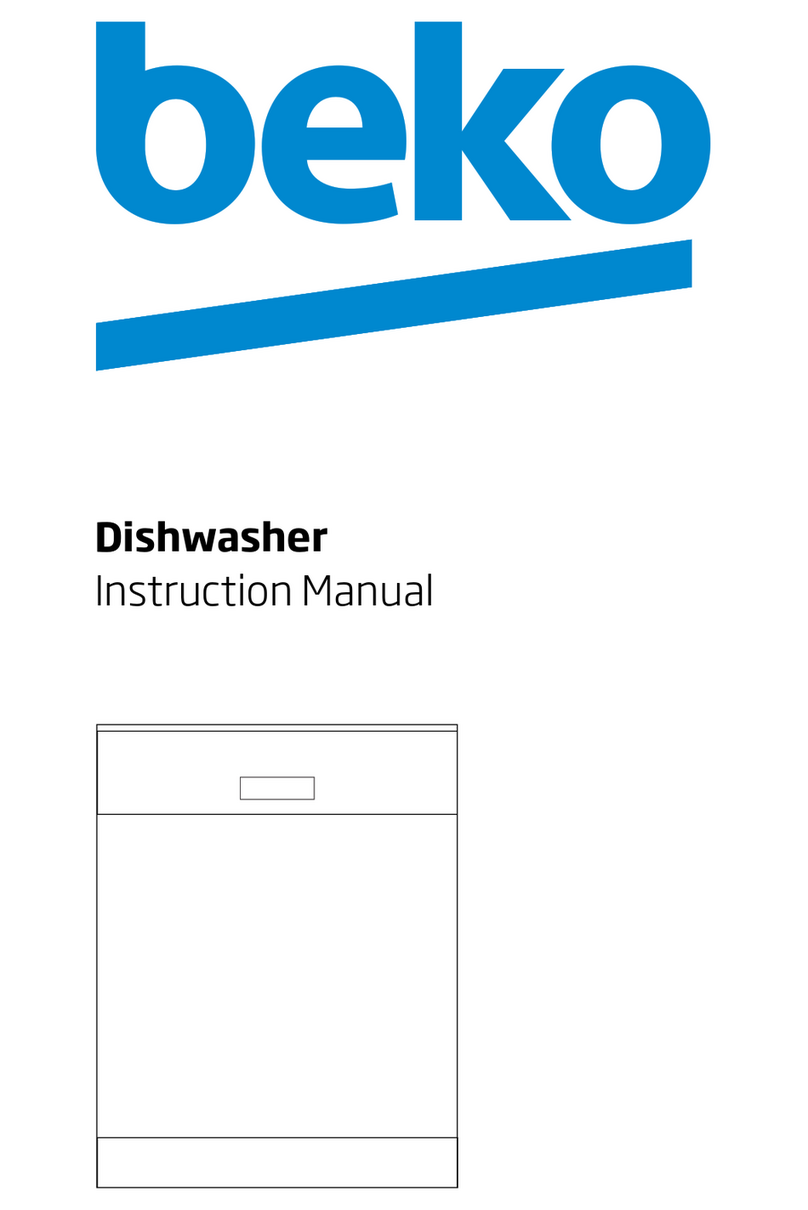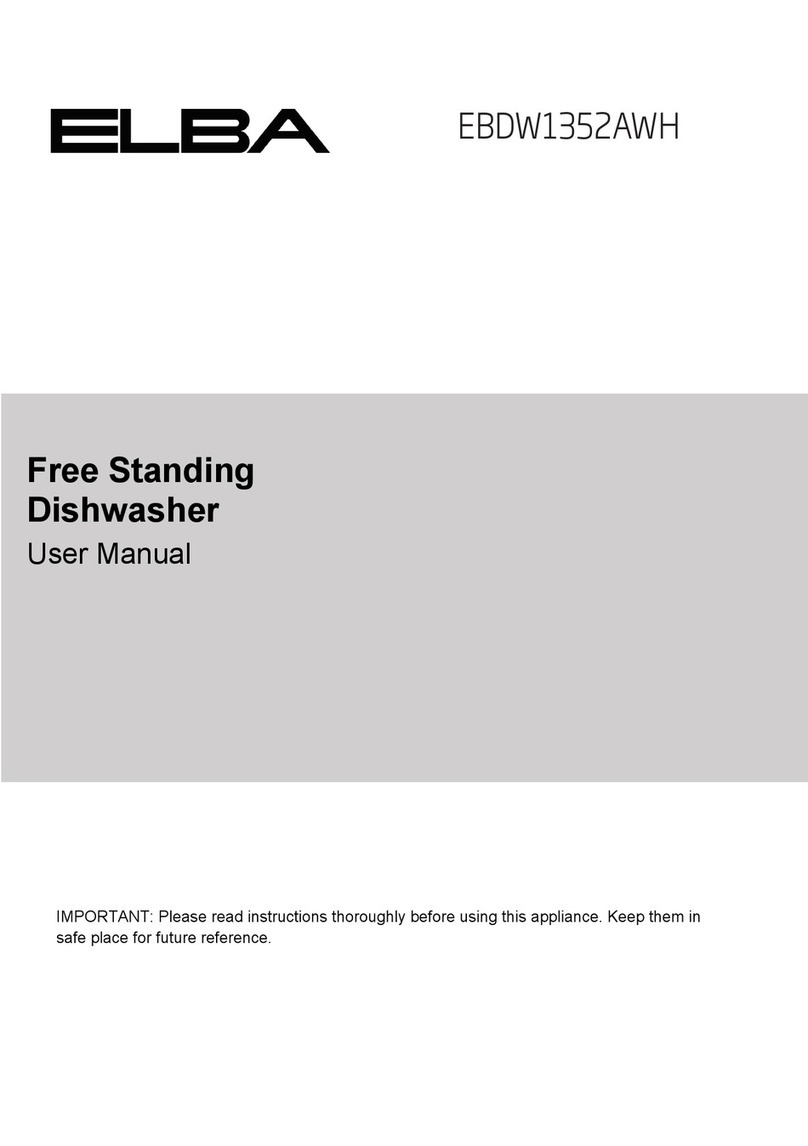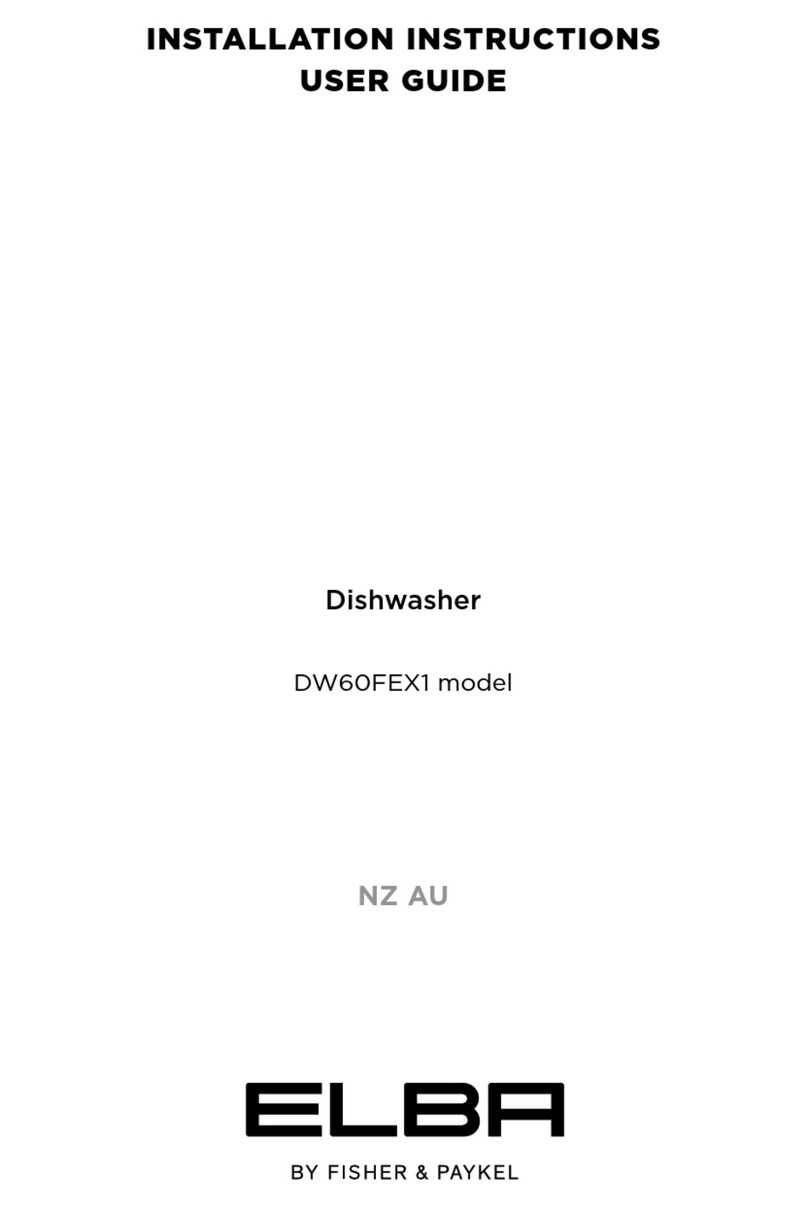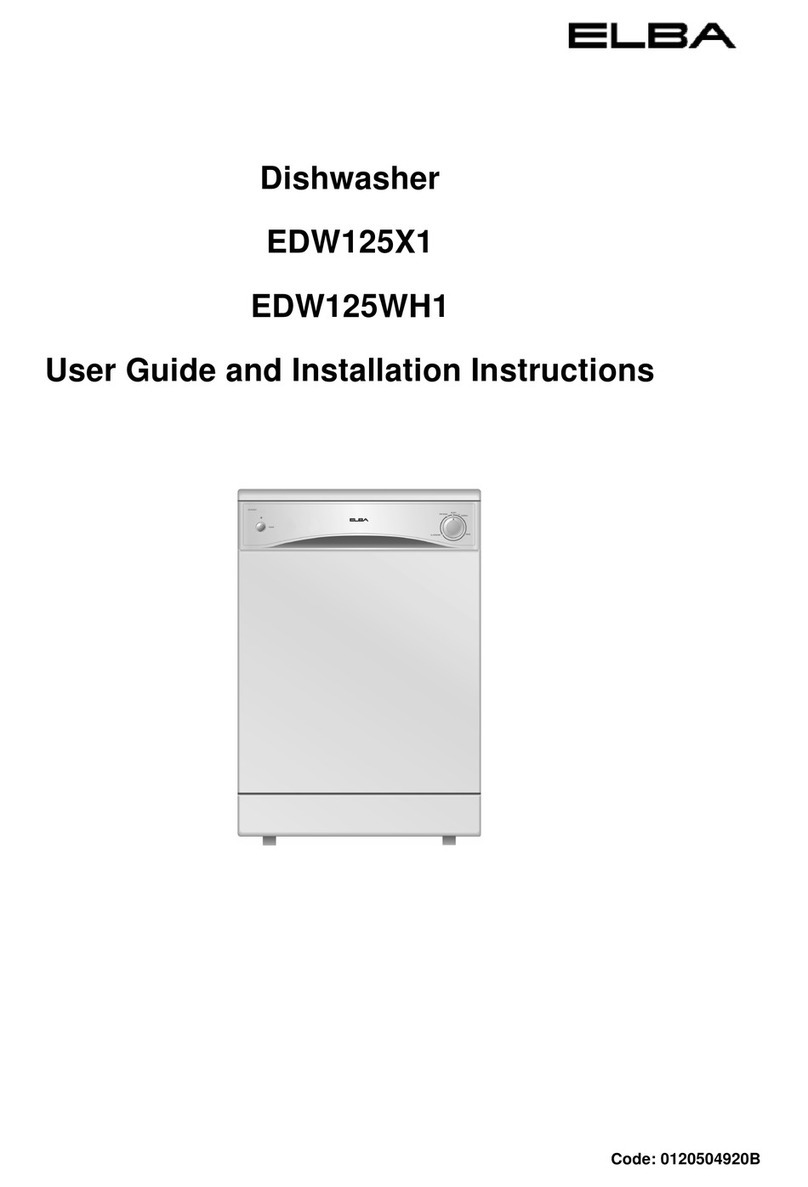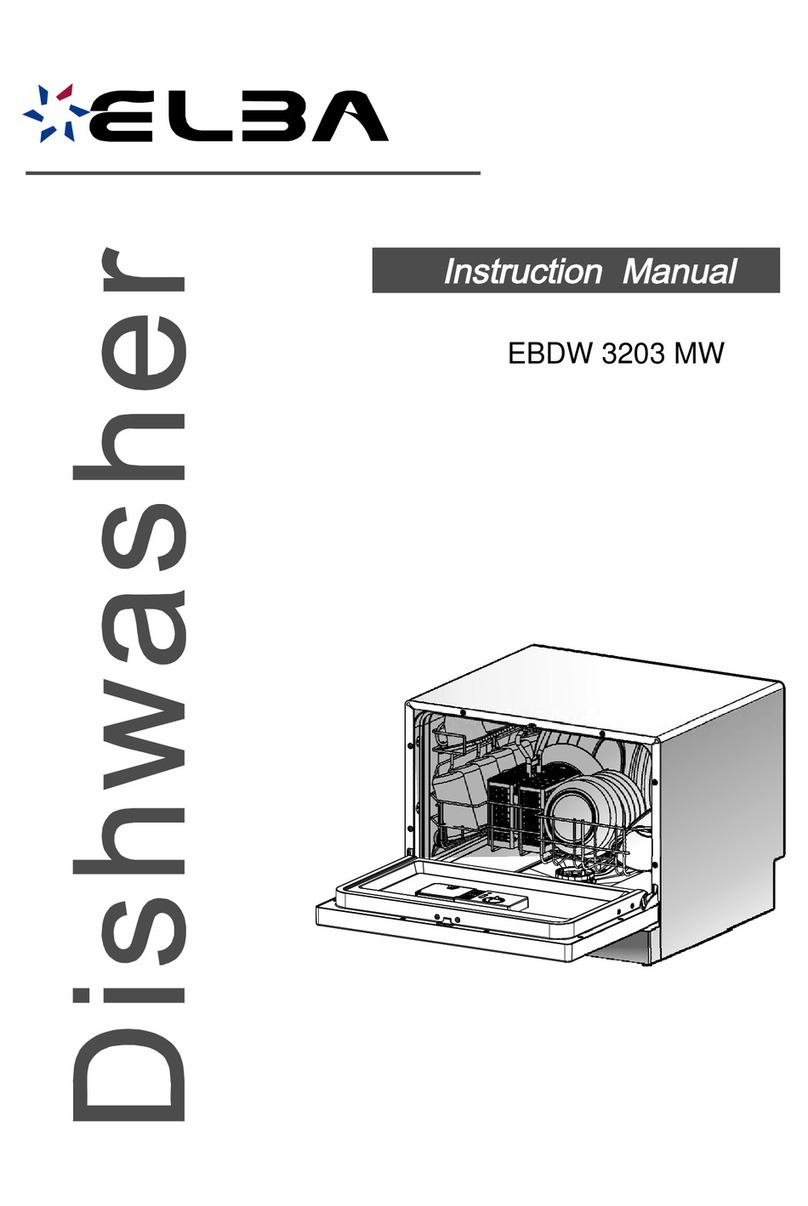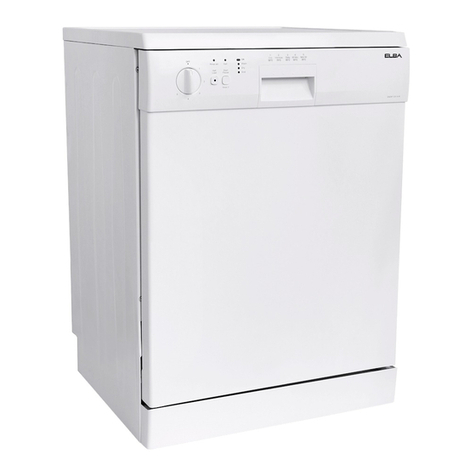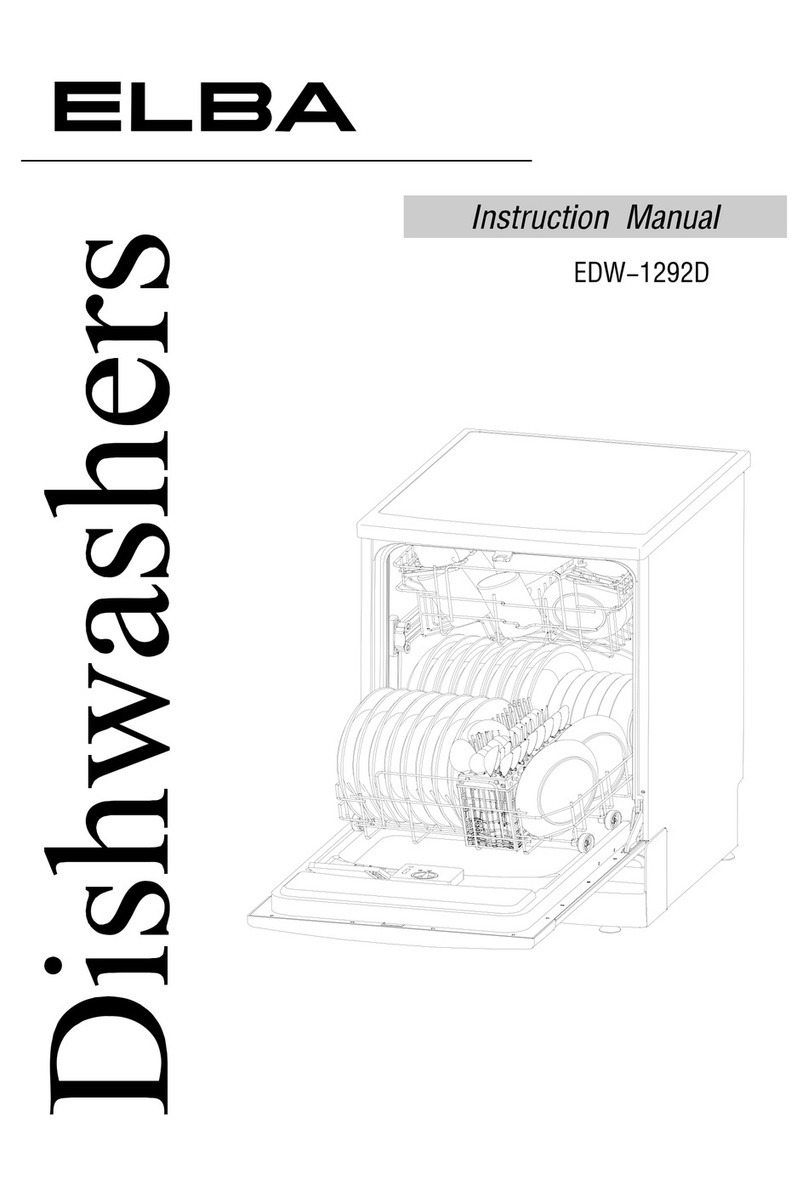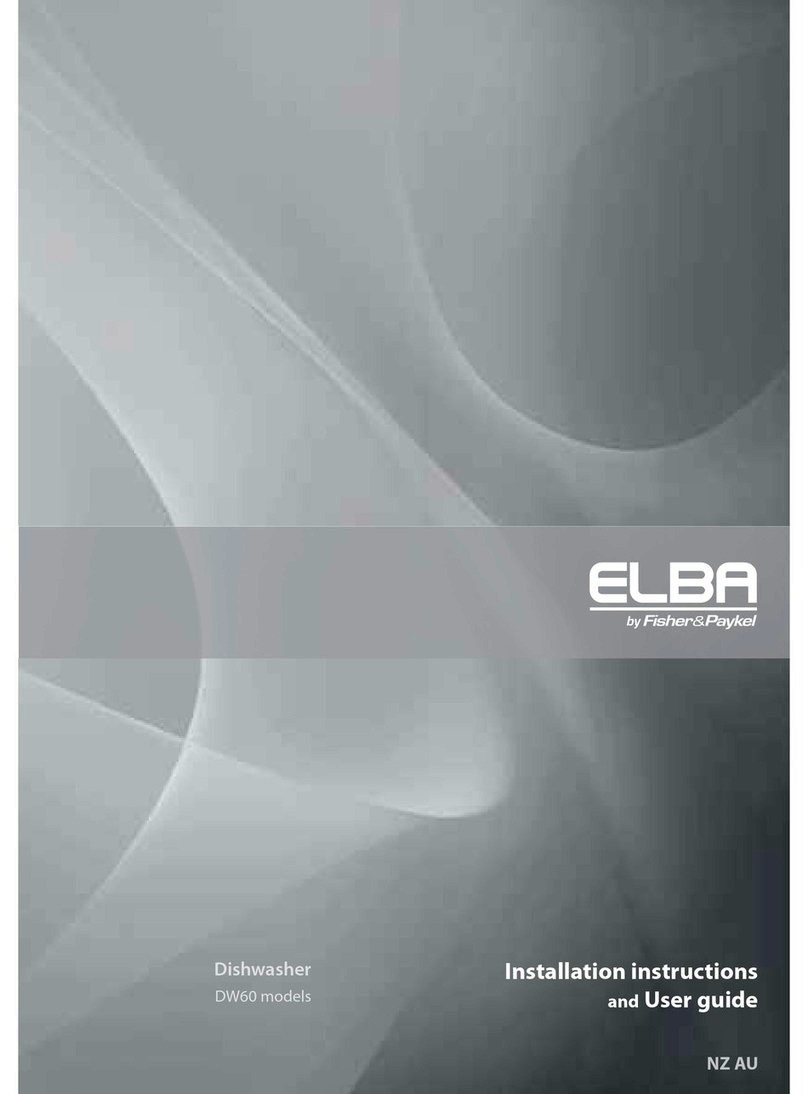
CONTENTS
1 INSTRUCTIONS FOR SAFETY AND
ENVIRONMENT 4
General safety........................... 4
Intended use............................. 5
Children’s safety ........................ 5
Disposing of packaging material ...... 5
Transportation of the product ........ 6
Compliance with WEEE Directive and
Disposing of the Wae Product ....... 6
Compliance with RoHS Directive ..... 6
Package information.................... 6
2 DISHWASHER 7
Overview ................................. 7
Fan drying syem....................... 8
Technical specications................ 8
3 INSTALLATION 9
Appropriate inallation location..... 9
Connecting water supply .............. 9
Connection to the drain ..............10
Adjuing the feet .....................10
Aquasafe+ ..............................11
Electrical connection..................11
Initial use................................11
4 PREPARATION 12
Tips for energy saving .................12
Water softening syem ...............12
Adjuing the water softening
syem ...................................12
Adding salt ..............................14
Detergent ...............................15
Tablet detergents ......................16
Rinse aid.................................17
Items not suitable for washing in the
dishwasher ..............................17
Placing the dishes into the
dishwasher ..............................18
Cutlery basket .........................20
Cutlery basket .........................20
Collapsible lower basket tines .......21
Collapsible lower basket tines .......22
SoftTouch Accessory ...................23
Lower Basket Glass Holder ...........23
Tray Wash Supports ....................23
Lower basket multipurpose / height
adjuable service rack ...............24
Lower basket bottle wire .............25
Upper basket height adjuable rack25
Upper basket multipurpose service
rack ......................................25
Adjuing the height of the upper
basket....................................26
Collapsible upper basket wires ......27
Height setting with empty basket ...27
Ceiling cutlery basket .................28
Ceiling cutlery basket .................28
5 OPERATING THE PRODUCT 29
Keys ......................................29
Preparing the machine ................29
Programme selection ..................29
Auxiliary functions.....................31
Starting the programme ..............31
Adjuing the amount of rinse aid...32
Programme follow-up .................32
Cancelling the programme ...........32
Salt indicator ...........................32
Rinse Aid indicator.....................32
End of programme .....................33
6 MAINTENANCE AND CLEANING34
Cleaning the outer surface of the
product ..................................34
Cleaning the interior of the machine34
Cleaning the lters ....................34
Cleaning the hose lter ...............35
Cleaning the impellers ................36
Lower impeller .........................36
Upper impeller ........................36
7 TROUBLESHOOTING 37

